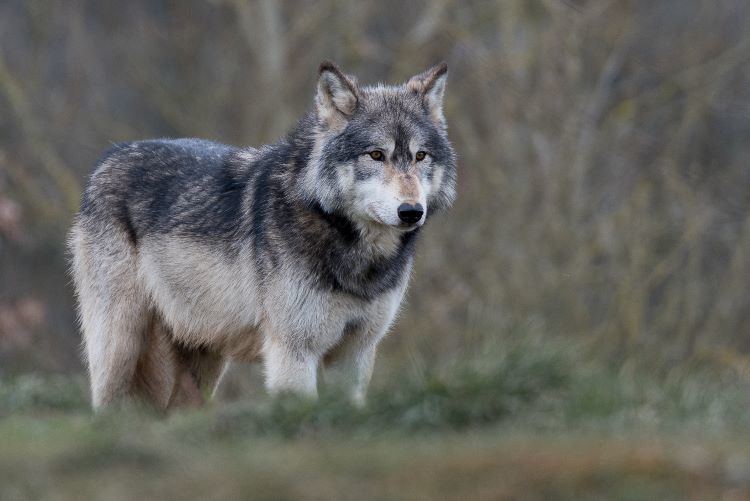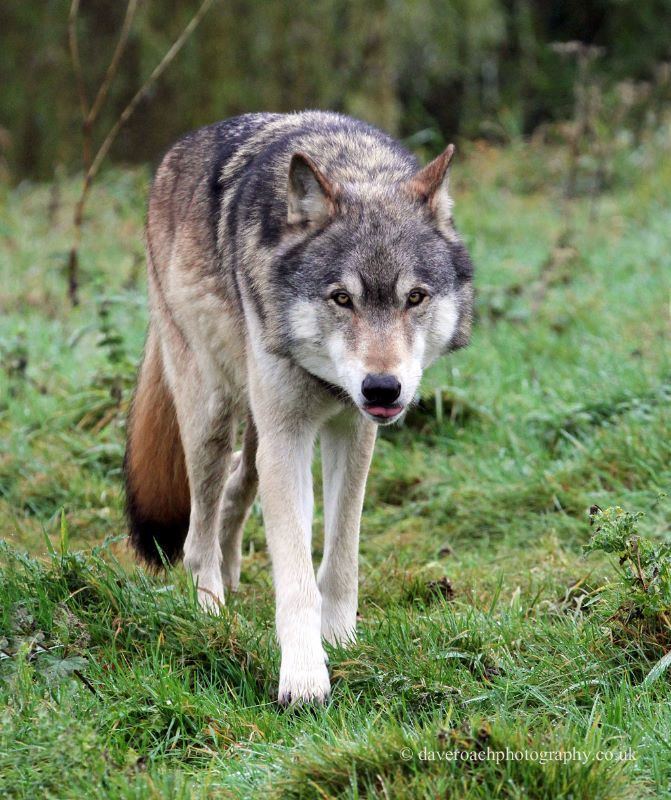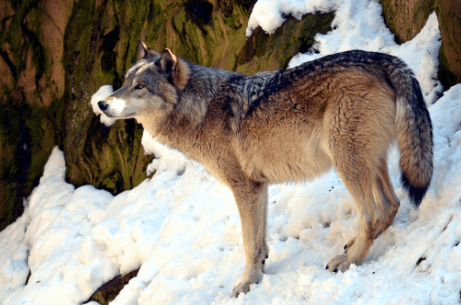Higher classification Gray wolf | Scientific name Canis lupus occidentalis Rank Subspecies | |
 | ||
Similar Gray wolf, Canis, Great Plains wolf, Eurasian wolf, Eastern wolf | ||
Northwestern wolf facts
The northwestern wolf, Canis lupus occidentalis, also known as the Mackenzie Valley wolf, Alaskan timber wolf, Canadian timber wolf, or northern timber wolf, is a subspecies of gray wolf in western North America. It ranges from Alaska, the upper Mackenzie River Valley; southward into the Canadian provinces of British Columbia, Alberta, and Saskatchewan as well as the Northwestern United States.
Contents

Along with C. l. nubilus, C. l. occidentalis is the most widespread member of the five gray wolf subspecies in North America, with at least six different synonyms.

The subspecies was first written of by Scottish naturalist Sir John Richardson in 1829. He chose to give it the name occidentalis in reference to its geographic location rather than label it by its color, as it was too variable to warrant such. Phylogenetic analyses of North American gray wolves show that there are three clades corresponding to C. l. occidentalis, C. l. nubilus and C. l. baileyi, each one representing a separate invasion into North America from distinct Eurasian ancestors. C. l. occidentalis, the most northwestern subspecies, is descended from the last gray wolves to colonize North America. It likely crossed into North America through the Bering land bridge after the last ice age, displacing C. l. nubilus populations as it advanced, a process which has continued till present times.

Northwestern wolves have been responsible for a few notable attacks on humans, with at least two fatal attacks in the 21st century in which both victims were partially eaten: in 2005, a young man was killed in Points North Landing, Saskatchewan, Canada while in 2010, a young woman was killed while jogging near Chignik on the Alaska Peninsula.

Description

Northwestern wolves are one of the largest subspecies of wolves with grown males weighing between 105 lb (48 kg) and 135 lb (61 kg) in British Columbia, Canada. The largest of any wolf on record was an Alaskan wolf that weighed 79.4 kilograms (175 lb). It was killed on 70 Mile River in east-central Alaska on July 12, 1939. Sir John Richardson described the northwestern wolf as having a more robust build than the European wolf, with a larger, rounder head and a thicker, more obtuse muzzle. Its ears are also shorter, and its fur bushier.
Reintroduction
In Yellowstone National Park, artificially relocated northwestern wolves have been well-documented feeding on elk. They usually stampede the herd using pack teamwork to separate the younger elk from the adults. They also will charge young calves separated from their parents. Winter-weakened or sick elk also play an important part of Yellowstone wolf diets and it is estimated that over 50 percent of winter-weakened or sick elk in Yellowstone are killed by wolves. Of these, about 12 percent of carcasses were scavenged by other predators including; ravens, bald eagles, black bears, grizzly bears, and coyotes. In the same national park, wolves also prey on bison, though such attacks usually involve sick animals or calves, as bison can easily kill wolves with their hooves.
They are present in Canadian or British safari parks including Longleat, Woburn, and Parc Omega.
